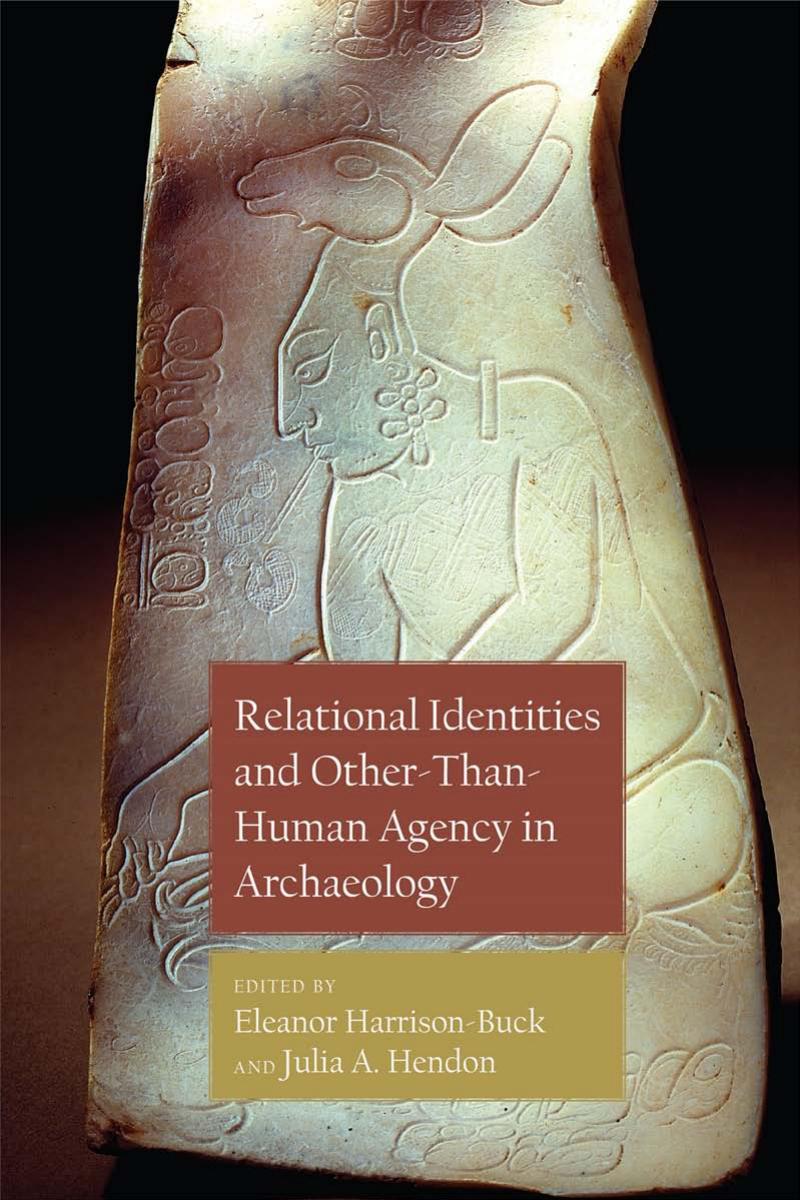Relational Identities and Other-than-Human Agency in Archaeology by Eleanor Harrison-Buck Julia A. Hendon

Author:Eleanor Harrison-Buck,Julia A. Hendon
Language: eng
Format: epub, pdf
Publisher: Chicago Distribution Center (CDC Presses)
Mesoamerican Understandings of Personhood and Agency
People in Mesoamerica have found many ways to express their understanding of how the world came to be, how it works, why “volitional beings” (Astor-Aguilera 2010:71) exist, and how they should live. This understanding is often identified by outsiders as religious in nature, but the separation between religion and other aspects of society is artificial: “It is not at all clear that a discrete category of ritual action ever existed” in Mesoamerica (Monaghan 1998a:48). That is to say, the desire to bracket off some set of activities as religious and others as economic, political, quotidian, or social does not allow us to appreciate fully the perspectives of the people we are studying. Miguel Angel Astor-Aguilera (2010:3) has discussed the same issue, writing that “Mesoamerican cosmologies are more about a daily social way of life revolving around conceptions of self, personhood, and a sense of place relating to what is both visible and invisible” than they are about “what one could term codified religion founded on classifications based on binaries of the sacred and the profane.”
Personhood and the self in Mesoamerica before and after European colonization are not limited to the individual human being/body. Further, there is not just one self per person, however that person is materialized. One’s identity or being is not predicated on assumptions of a bounded, autonomous individuality that is restricted to the living, human beings, or tangible entities (see, e.g., Astor-Aguilera 2010; Gossen 1996; Houston and Stuart 1989; Monaghan 1995; Pitarch Ramón 1996; Vogt 1969, 1976; Watanabe 1992). Since these elements of the self can be separated from the physical being to form connections and relations with other individuals, groups, natural forces, and the dead, they exist across time and space beyond the boundaries of a particular body or lifespan. Indeed, these essences must be fixed or tethered through ritualized practices involving objects and places (Astor-Aguilera 2010). Tethering can be undone as well, so that the essence of personhood becomes disconnected from a human being, an object, a place, or an animal.
Important aspects of the definition of personhood in Mesoamerica are the passage of time, one’s relationship with the landscape one inhabits, the kinds of actions one engages in, the relationships one is part of, and the way those actions contribute to social memory (Hendon 2012). Concepts that have been translated as “destiny,” “co-essence,” or “soul” connect to Mesoamerican views on the spatial and temporal ordering of existence. These concepts thus lie at the heart of a Mesoamerican understanding of personhood. A person’s destiny is tied to the temporal system because it is shaped by day of birth, as determined by the indigenous calendar systems that were the basis of measuring time before the Spanish conquest (Monaghan 1998b; Tedlock 1992).
Although day of birth is important, it is not determinative. Persons must also work to achieve or mitigate their destiny through appropriate behavior. This shared understanding of the consequences of temporal positioning forms part of how Mesoamerican peoples define themselves in both space and time.
Download
Relational Identities and Other-than-Human Agency in Archaeology by Eleanor Harrison-Buck Julia A. Hendon.pdf
This site does not store any files on its server. We only index and link to content provided by other sites. Please contact the content providers to delete copyright contents if any and email us, we'll remove relevant links or contents immediately.
| Africa | Americas |
| Arctic & Antarctica | Asia |
| Australia & Oceania | Europe |
| Middle East | Russia |
| United States | World |
| Ancient Civilizations | Military |
| Historical Study & Educational Resources |
Underground: A Human History of the Worlds Beneath Our Feet by Will Hunt(12024)
Sapiens by Yuval Noah Harari(5294)
Navigation and Map Reading by K Andrew(5111)
The Sympathizer by Viet Thanh Nguyen(4305)
Barron's AP Biology by Goldberg M.S. Deborah T(4097)
5 Steps to a 5 AP U.S. History, 2010-2011 Edition (5 Steps to a 5 on the Advanced Placement Examinations Series) by Armstrong Stephen(3689)
Three Women by Lisa Taddeo(3354)
Water by Ian Miller(3127)
The Comedians: Drunks, Thieves, Scoundrels, and the History of American Comedy by Nesteroff Kliph(3039)
Drugs Unlimited by Mike Power(2545)
A Short History of Drunkenness by Forsyth Mark(2233)
The House of Government by Slezkine Yuri(2159)
DarkMarket by Misha Glenny(2158)
And the Band Played On by Randy Shilts(2129)
The Library Book by Susan Orlean(2042)
Revived (Cat Patrick) by Cat Patrick(1963)
The Woman Who Smashed Codes by Jason Fagone(1929)
Birth by Tina Cassidy(1864)
The Absolutely True Diary of a Part-Time Indian by Sherman Alexie(1858)
